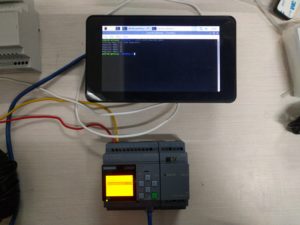HVAC Assessor / Controller
(using Raspberry Pi, PLC, AWS and remote monitoring)
Currently under development
Introduction:
This product is currently being designed to act as a assessor as well as a remote controller for Air Handling Units (AHU) in HVAC.
Currently, to check the proper functioning or efficiency of an AHU, one has to physically visit the system and check all the parameters. And even if a remote monitoring system has been implemented, it cannot be used to change the parameters of the system.
However, by coupling a PLC and a Raspberry Pi together with network connectivity, parameters on the AHU can be controlled from anywhere in the world.
Features:
- Remote monitoring of sensors
- Historical data stored in cloud storage
- Performance analysis
- Report generation
- Control the system remotely to ensure efficiency.
- Touchscreen with on-screen keyboard
- Provision for optional for 4G/LTE connectivity
- 6 hour backup battery in case of power failure.
Description:
In this device, a modular Program Logic Controller (PLC) is connected to multiple sensors such as temperature, pressure, humidity, etc and logic is written for the PLC to grab the data and store it into it’s registers.
A separate Raspberry Pi is connected to the PLC via a Ethernet cable (also can be done wirelessly) and reads the data from the registers of the PLC. This data is then transmitted onto AWS servers. The clients monitoring the system will be given a front end to analyse all the data being received. The front is being designed using node-red as it was designed precisely for such kind of front ends.
If the controller version is being used, the registers on the PLC can be written back to. Logic is coded on to the PLC to read these registers and change the parameters accordingly.
In case of power loss a battery has been provided which will last for up to 6 hours. An optional 4G connectivity Raspberry Pi hat is also being provided for setting up the device in remote areas with no wired internet connectivity.
A separate enclosure for the PLC and Raspberry Pi together has been designed. This will allow us to place our own connectors inside the enclosure. When installing, all that needs to be done is to connect the sensors with designated number of pins onto the external side of the enclosure. This will make the device plug & play, fast installation and easy for any person to install the device without having to worry about writing program logic.
This product will mainly be targeted for large scale installations such as in industries, hospitals, malls etc.

